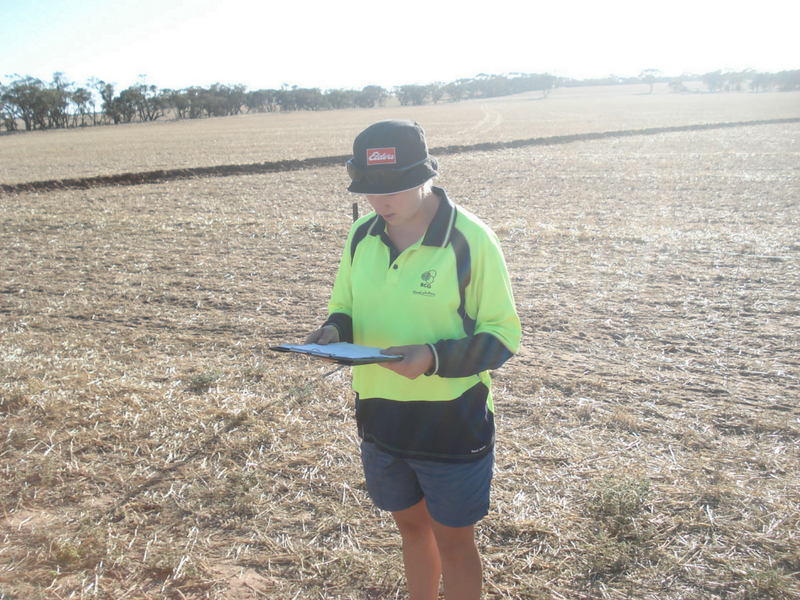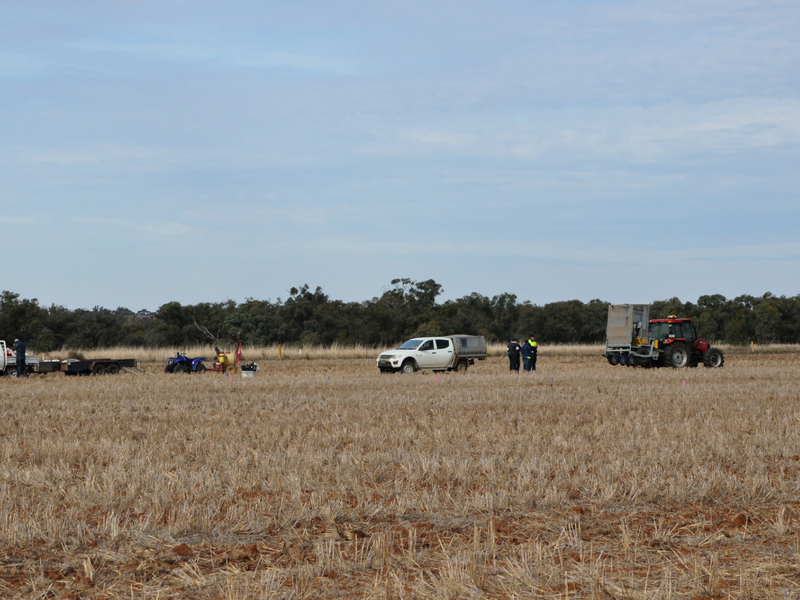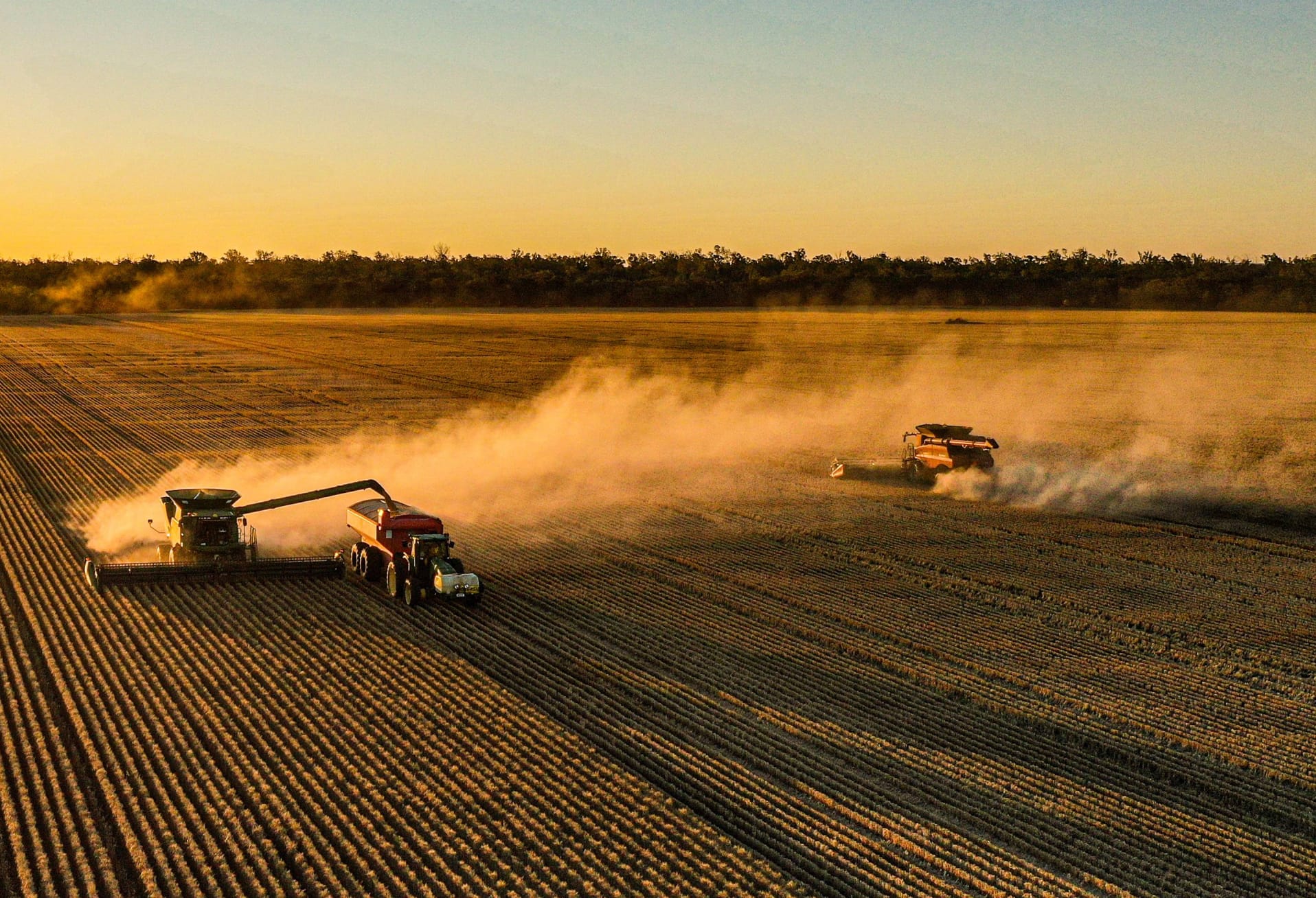Overview
Hay producers are encouraged to consider feed quality testing, a critical activity for securing a marking and ensuring adequate storage to maintain quality and reduce the risk of haystack fires this year as production in North West Victoria ramps up.
The “Hay to Market” session at BCG 2025 Main Field Day’s (MFD) , approximately 80 percent of the attendees nominated hay production as an ongoing, established enterprise in their farming business. Many cited it as an alternative weed control option in the farming system, particularly for annual ryegrass, as well as a profitability diversification strategy, suppling both local markets such as the dairy industry and export markets for oaten hay.
This year however, a shorter growing season due to the later start, limited soil moisture, and strong hay prices have meant many crops initially grown for grain are now destined for hay.
The decision to cut for hay brings additional management considerations for many growers such as engaging additional labour or contractors to cut, rake, bale and stack the hay, and ensuring there is adequate storage to keep hay dry to prevent degradation and retain high hay quality.
Spreading risk
During the MFD session, guest speaker Ella Lanyon, a Boort hay and grain producer, said that whilst hay production lengthens their harvest period from October through to December or January, and requires careful labour management to avoid fatigue, it also spreads risk. “I think long term, it [hay] has been one of our highest profiting enterprises but ultimately, it goes hand in hand with our grain growing program because it allows us to spread our harvest and in doing so, hopefully our risk and vulnerability to some significant weather events that we’ve seen in the last few years”.
Securing a market
At the same session, Marcus Crawford from hay processing company, Balco, encouraged growers to consider their marketing options based on current market trends and capacity for on-farm storage. “The domestic market price is often dictated by export market prices, however as fresh supply is entering the market, domestic prices often soften” he said.
Crawford cautioned producers who don’t have storage to “make sure you secure a market now to sell directly out of the paddock. Having hay stacked outside is high risk and is a very short term solution. A rain event will see a reduction in quality of the top and bottom bales in the stack. It also means that you are exposed to the current market price and don’t have the option of potential price increases later in the season.”
For growers who have storage, he said “demand from previous years ….has seen farm supplies nearly completely cleaned out so growers will be looking to replenish their stocks. If it is a dry summer and autumn, like conditions experienced in the current growing season, we can expect hay prices to increase again in mid-autumn next year.”
Hay quality
Conducting feed tests to ascertain the quality of your product will help ensure growers receive the best marketing outcome. Crawford also indicated that at Balco, “With the export market, the two most common parameters are water soluble carbohydrates and neutral detergent fibre. Fibre digestibility is also highly regarded. From a domestic point of view, you need to talk to the end user. It’s all about metabolisable energy and crude protein” he said.
These sentiments were echoed by Swan Hill dairy farmer, Matt Glowery, who also presented at BCG’s MFD. He sources hay for his dairy herd from Mallee producers but also tries to grow as much as he can to reduce costs. Glowery suggested digestibility was an essential factor when sourcing hay “looking at neutral detergent fibre, if it’s in the low 40s or ideally in the 30s that’s rocket fuel for us.” He added “But if I look at a cereal hay and it’s high 50s, or in the 60s, for us, getting milk conversion out of that is pretty hard”
Avoiding hay stack fires
Rushing to get it into a bale when hay hasn’t completely cured, especially if there is inclement weather coming, is a possible cause for haystack fires.
Lanyon advised testing for bale moisture was a priority for her business for both ensuring quality for export customers and for fire safety in their sheds. “We test every single bale before it is stacked in our sheds” she said. (See BCG Technical Bulletin No. 14 for more practical tips on preventing haystack fires https://www.bcg.org.au/technical-bulletin-no-14-09-10-25/ ).
Agronomic considerations
To produce profitable, high quality hay, many decisions are needed to drive biomass production, optimise crop cutting time for quality, and manage several levers that impact the cut crop, windrow and paddock conditions for safe baling at the right moisture and free of contaminants.
Spraying hay crops before cutting is becoming more common, Alison Frischke, BCG Project Manager said.
“A pre-harvest spray helps manage the regrowth of cut crop bases and weeds through the windrow and stalls further moisture use, helping to reduce the windrow drying down time for baling.”
BCG Collaboration
Frischke is managing oaten hay trials with treatment lists developed in close consultation with hay-grower and industry survey responses and the AgriFutures Export Fodder Advisory Panel.
Funded by AgriFutures and delivered in collaboration with SARDI and Hart Field Site group, BCG are conducting a field trial west of Birchip investigating several plant growth stimulants on Kingbale and Mulgara varieties, applied from mid tillering to panicle emergence to achieve higher biomass while maintaining quality. Additionally, a paddock scale trial north of Birchip is investigating the effects of pre-cutting sprays on curing time and quality. Treatments of herbicides and surfactants were applied 7, 5 and 3 days before cutting on 14 October. Windrow hay samples are being collected every two days for 10 days to assess treatment effects on drying down time and quality.
BCG is also collaborating with Murray Dairy on a C4Milk project to understand the role of break crops in northern Victorian forage-cropping systems. In recent years, inland dairy systems have been shifting from permanent pasture feedbases to more intensive forage-cropping systems. Crop rotations being used tend to prioritise cow nutrition over agronomy considerations, e.g. cereal/maize rotations with limited use of legume or brassica break crops. There’s concern that the lack of rotation diversity and total removal of above ground residues will begin to affect the farming system sustainability.
A BCG dryland trial at Mitiamo, and an irrigated trial at Kerang led by Irrigation Farmers Network (IFN), are looking at different combinations of forage crops and break crop rotations (including summer legume and maize crops on irrigation), on crop and forage production, soil health and profitability of the different forage cropping systems.
Conversations are being supported along the value chain from growers to buyers, raising understanding about hay quality drivers and market expectations, and growing good business relationships.
Acknowledgements
Feel strongly about an aspect of hay production that needs more research? Have your say and help guide future research of hay production in Victoria and South Australia, in this grower, industry and advisor survey: https://tinyurl.com/ytb9bpbr
AgriFutures project: Delivering a step change in agronomic management of export oaten hay in South Australia and Victoria
Murray Dairy Project: C4Milk FC1b – Understanding the role of break crops in northern Victorian forage cropping systems.













